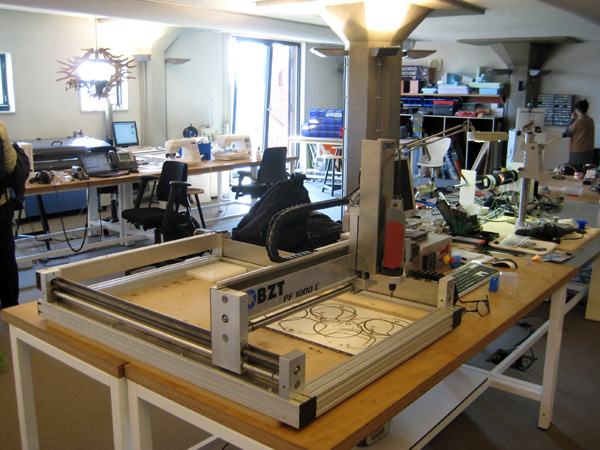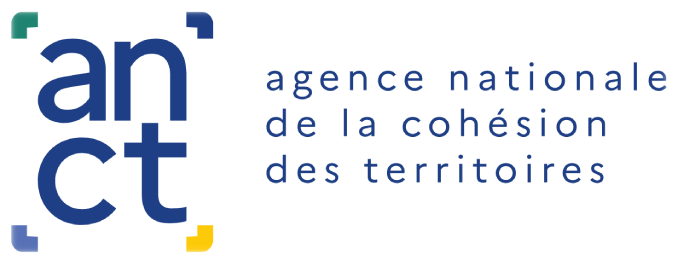According to sociologist Isabelle Berrebi, "makers, fablabs, and open initiatives are in the process of building a national visibility, whereas previously their interlocutors were local, regional, territorial or transnational. We are moving away from the glocal that defined these workshops, these collaborative approaches to sharing and circulation, this sharing economy.
While the makers have demonstrated, on the occasion of the health crisis, their ability to react and manufacture, the General Directorate of Enterprises (DGE) publishes a study devoted to the Digital Manufacturing Workshops (AFN), conducted in partnership with the National Agency for Territorial Cohesion (ANCT).
Conducted by the Ocalia - Terre d'Avance consortium, this study covers more than 100 AFNs and nearly 500 users. "The spectrum of NFAs is very varied in terms of physical or technical characteristics (size of the location, capacity, equipment, teams, etc.) and economic characteristics (financing plan, operating budget, business model, etc.). Other criteria such as the services offered, governance, etc., are also discriminating.
The study identified 6 archetypes of NFAs: new digital mediation spaces, village square 4.0 (fablab attached to a hybrid third place), generic fablabs, territorial innovation laboratories, professional design offices and prototyping workshops, new digital training spaces
The new digital mediation spacesIn general, these are structures historically dedicated to digital mediation for the general public (such as EPNs or Cyberbases) and which have updated their service offer by integrating one or more digital manufacturing solutions (e.g. 3D printers). The service offer of these local places (including beyond the NFA component) contributes strongly to social inclusion and to the reduction of the digital divide. However, the range of digital uses remains rather basic.
Hybrid third placesThese are places that catalyze local initiatives and promote the hybridization of audiences and activities. The integration of an NFC component - most often presented as a FabLab but generally less accomplished - is done in the same way as other sub-spaces or activities (e.g., microbrewery) and may, depending on the conditions of implementation, be more a matter of juxtaposing functions than hybridizing them. The presence of these places is perceived as an additional factor of attractiveness as much for the inhabitants as for the newcomers or even for the tourists. They contribute to the influence of their territory.
Generic FabLabsWe find here the generic model of the FabLab which integrates digital fabrication equipment as well as a wider range of conventional tools. Beyond the place, we find here a community and a state of mind that are recognized and sought after.
The increase in digital skills of users tends to spread to their respective networks. Indeed, we observe in these places a dynamic of transmission quite developed and undoubtedly favored by the organization in communities.
Territorial Innovation LabsThese projects are designed and developed in close collaboration with public and private higher education and research organizations. The project dynamic is highly developed, as is the documentation effort.
The dissemination of digital culture and digital manufacturing, as well as the increase in digital skills, are impacts that are particularly emphasized. The fact that these levers are anchored in a pedagogical process at the crossroads of research and the economic world is no stranger to this.
Professional prototyping workshopsHere the model is designed primarily to meet the needs of a professional target group. Equipment and skills are almost equal within the service offer and are often of a high standard. The result is a significant economic impact, both direct (jobs, turnover, investments) and indirect (business start-ups, development of innovations), which is quite logical given their involvement in projects with an economic focus.
The new digital training spacesThe AFN component within these places is above all a support tool for the training of the public. Their work is important and recognized in terms of social cohesion through training and socio-professional integration, particularly with young people and job seekers, especially in fragile territories.
Références :
The sustainability of the model remains to be invented
The study's authors point to a series of challenges:- "Many AFNs have an unbalanced economic model. And if these structures are relatively young and are still in the structuring phase, many of them have difficulties in considering their development given their financial situation.
- In addition, the wide range of activities offered in many NFAs requires a wide variety of skills and results in a form of scattering of human resources.
- volunteering appears to be rare and even declining.
- In order to meet all expectations, the teams must become "five-legged sheep". But the employment framework of the teams is often precarious and they find themselves in tension between high versatility requirements and an unattractive employment framework.
However, several examples of NFAs illustrate "the economic relevance of an assertive positioning on the professional target".
According to the authors of the study, the use of FFN by companies is hindered by several factors:
"The lack of visibility on what these places offer and then the lack of understanding of the benefits that companies can get from them. The limited time and resources that VSEs/PMs can devote to these issues. In the end, only 21% of NFAs say that businesses are a (very) large audience.Public support remains essential but would benefit from being rethought
"The dependence of NFAs on public support is marked, both in terms of investment and operation, and particularly in the start-up phase. Fortunately, the involvement of local authorities in the support or financing of NFAs has increased in recent years, multiplying the possibilities of financing. "We regret, however, the lack of alignment of funders, which can lead to certain cumbersome procedures. We are also concerned about the financing methods that can lead to management by opportunity (e.g. on investments) that is penalizing in the long term. "Finally, we note that in return for public support, many NFAs fulfill general interest or even public service missions that can monopolize their resources. These typologies have shown the role of these places on the territory and on the economy, particularly in terms of disseminating digital technology, reinforcing the local economic fabric, and enhancing the territory's influence and attractiveness.About fifteen recommendations, divided into four blocks, conclude this investigation and analysis.
Make NFAs visible and bring the momentum to the national levelLaunch a national communication campaign to publicize the benefits that economic and higher education and research actors can derive from FFN.
- Define a permanent call for projects specific to FFN.
- Identify a national and territorial representation of AFN.
- Support the development of FFN through an external engineering mechanism.
- Structure regional NFA networks.
- Create a system for sharing responses to the generic needs of AFN (training, communication, recruitment of specialized profiles, etc.).
- Deploy a complementary currency system to value the involvement of volunteers, employees and users.
- Create a digital pass for VSEs/SMEs.
- Make the AFNs the local relays of the public policy of design (innovation through use).
- To make the AFN the places of discovery and valorization of the productive trades (industry, craft industry).
- Systematize and harmonize impact measurement and make it a counterpart of public funding.
- Create a legal-financial guide to secure the NFA/community relationship.
- Create a single framework for applying for project funding.
- Create dedicated financial mechanisms and a guarantee fund.
- Implement a framework for the mobilization of national and European funding for the development of FFN.





